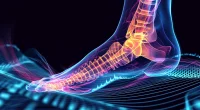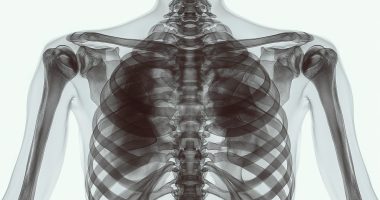Necrotizing pancreatitis
What’s that?
Necrotizing pancreatitis, or pancreonecrosis, is an acute surgical pathology, a complication of acute pancreatitis, which leads to self-destruction, death of pancreatic tissues, and disruption of vital organs. Rapidly and significantly worsens the patient’s condition, poses a threat to his life, and requires urgent initiation of intensive care and subsequently – surgical intervention.
About the disease
Pancreonecrosis is the most severe complication of acute pancreatitis, developing in a quarter of cases. As a rule, patients of working age suffer from it. In recent years, the incidence of this pathology in the world has been growing constantly.
The basis of the mechanism of disease development is a violation of the mechanisms of protection of the gland from the enzymes produced by it, which destroy its fatty tissue and blood vessels, and the resulting decay products get into the bloodstream and spread throughout the body, poisoning it.
Types
The classification of pancreonecrosis depending on the peculiarities of pathogenesis, according to which three types of pathology are distinguished, has received clinical application:
- Hemorrhagic pancreonecrosis. It occurs with excessive activity of the enzyme elastase, which destroys the wall of blood vessels. In damaged tissues, microcirculation disorders develop, and vessels spasm, which leads to rapid edema of the parenchyma. After some time (from a few hours to a few days), paresis of the wall of the affected vessels develops, they expand, and blood flow in them slows down significantly. As a result of these processes, the risk of thrombus formation, tissue ischemia, and necrosis increases. At the initial stages of the disease, elastase damages only the vessels of the pancreas and, later, other internal organs. The clinically advanced stage of pancreonecrosis is determined by blood saturation of the gland parenchyma, multiple hemorrhages into other organs, and the presence of abdominal cavity pathological fluid (effusion) of bloody character.
- Fatty pancreonecrosis. Occurs with excessive activity of lipase enzyme. It is characterized by destruction with subsequent formation of foci of necrosis of fat cells of the pancreas, further – by destruction of omentum, peritoneum, mesentery of intestines, and internal organs. Its outcome is often chemical peritonitis and insufficiency of internal organs.
- Mixed form of pancreonecrosis. It occurs if the level of lipase and elastase activity is approximately equal. Fatty tissue and pancreatic vessels are destroyed to an equal extent. The course, as a rule, is severe and often ends lethally.
Symptoms
The disease always develops on the background of acute pancreatitis. Debuts always acutely, in almost all cases – after afeast with a large meal or drinking large amounts of alcohol. The leading symptom of pancreonecrosis – is intense, excruciating for the patient, girdling pain, recoiling in the left shoulder, the left side of the abdomen, and the lumbar. Until the moment of dying of nerve endings, the more pronounced the necrosis, the more severe the pain syndrome, but with their necrosis, the pain gradually decreases.
The second characteristic sign of pancreatic pancreonecrosis is repeated frequent vomiting, which does not bring relief to the patient and occurs without connection with food. Vomiting masses contain blood and clumps of bile.
Vomiting soon leads to dehydration of the patient’s body, which is manifested by a decrease in the volume of excreted urine and dryness of mucous membranes and skin.
Other manifestations:
- intestinal bloating, gas retention;
- lack of stool;
- increase in body temperature to 38-39°C;
- agitation, confusion, and disorientation in his personality, place, and time (in case of brain damage);
- in 5-6 days from the beginning of the process, appearance in the epigastrium and left subcostal region is visually noticeable, with tumor-like formation (dense inflamed gland) and hypersensitivity of the skin over it.
Reasons
The leading cause of pancreonecrosis and even uncomplicated forms of acute pancreatitis is significant dietary errors and consumption of large amounts of alcohol.
Diagnosis
The condition of patients with pancreonecrosis is usually severe or extremely severe, so diagnosis is carried out directly in the intensive care unit or the surgical department. It is performed by a surgeon, a gastroenterologist, and an intensive care physician.
The diagnosis is based on the patient’s complaints of intense shingling pain, irradiating to the left side of the lumbar region, abdomen, and scapula, combined with repeated indomitable vomiting and anamnesis data – the connection of the appearance of complaints with heavy drinking and active consumption of alcoholic beverages. The examination will reveal pallor, earthy tint, dry skin and mucous membranes of the patient, dry, white plaque on the tongue, abdominal bloating, and livid spots on its sides. On palpation, the doctor will detect soreness in the area of the pancreas. Frequent shallow breathing and pulse and low blood pressure will indicate a pronounced general intoxication. To confirm the diagnosis will help methods of additional diagnostics, among them:
- determination of pancreas enzymes (amylase, lipase, elastase) in blood and urine (repeatedly to monitor the dynamics of the process);
- ultrasound of the pancreas and other abdominal organs;
- radiography of the abdominal cavity;
- retrograde cholangiopancreatography;
- magnetic resonance or computed tomography of the pancreas;
- in severe, doubtful clinical situations – diagnostic laparoscopy.
Treatment
As a rule, a patient with pancreatic pancreonecrosis is treated in the intensive care unit, sometimes in surgery. Outpatient treatment is impossible and inadmissible.
Above all, the therapeutic interventions are aimed at:
- complete rest of the affected gland (bed rest, nutrition by infusion, gastric lavage with solutions of cool temperature);
- anesthesia (with the use of non-narcotic, if they are not effective enough – narcotic analgesics, antispasmodics, diuretics, novocaine blockades;
- reducing intoxication of the body by intravenous infusion of large volumes of solutions that promote the elimination of toxins from the blood;
- fight the infection (the patient is prescribed broad-spectrum antibiotics);
- correction of other internal organs.
Surgery is performed when the patient’s condition is stabilized (not earlier than five days from the beginning of conservative treatment). Its scope usually consists of the excision of dead tissue (necrectomy) and normalizing the outflow of enzymes produced by its cells from the pancreas.
They also carry out the surgical correction of complications of pancreonecrosis – stopping gastrointestinal bleeding, removing necrotized tissues of internal organs, opening purulent-inflammatory foci, and so on.
All these treatment options are available in more than 600 hospitals worldwide (https://doctor.global/results/diseases/necrotizing-pancreatitis). For example, total pancreatectomy can be performed in 25 clinics across Turkey for an approximate price of $8.9 K (https://doctor.global/results/asia/turkey/all-cities/all-specializations/procedures/total-pancreatectomy).
Prevention
There is no specific prevention of pancreonecrosis. To reduce the likelihood of developing acute pancreatitis and its complicated variant, it will help to comply with the rules of healthy eating, refusal to overeat, control over yourself and the amount of food eaten during meals, refusal to drink alcohol or at least control the amount of alcoholic beverages drunk, avoid excessive use of alcohol in one evening.
Prevention of complications of pancreonecrosis is to contact a doctor at the appearance of the first symptoms of ill health to clarify the diagnosis and the timely start of adequate therapy.
Rehabilitation
Pancreonecrosis is a formidable disease, which, even with a favorable prognosis, significantly affects the patient’s condition, weakening his body.
For a certain period (two to four weeks or more, depending on the clinical situation), the patient stays in the hospital, first in intensive care, then in surgery, and then possibly in the therapeutic department. Medical workers carefully monitor his condition, conduct examinations, and take tests. In parallel, the patient receives infusion therapy and drugs for ingestion, helping to normalize the work of his internal organs. If there are positive dynamics, the doctor allows you to gradually expand the diet and add new products to the menu.





